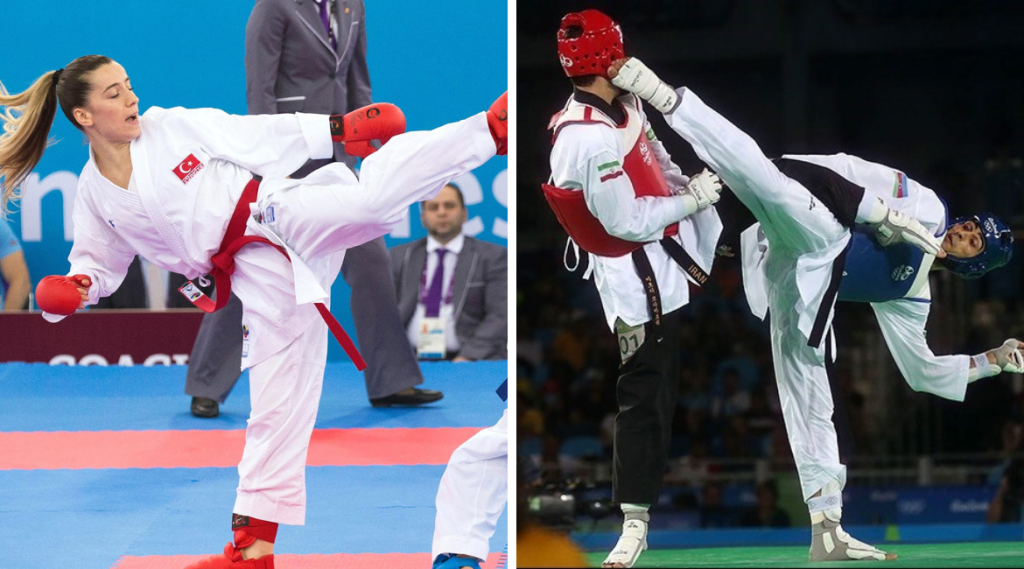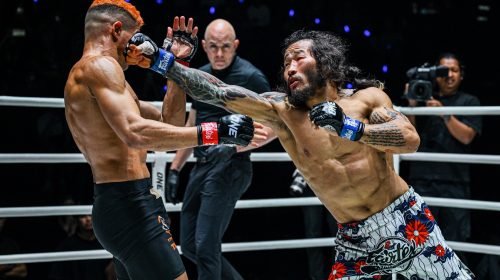
What is the Difference Between Karate and Taekwondo?
There are many martial arts, but two – Taekwondo and Karate top the list for many people’s favorites and preferences. Before choosing to train in either, you should know their similarities, and differences.
From a casual glance, both of them look similar. They involve kicking and arm strikes. But the similarities end there. When you learn more details of these martial arts, differences start to emerge.
So, what makes Karate different from Taekwondo? Keep reading to see the differences. You could also check out AITKD. It reveals more about the art, science, and spirit of Tae Kwon Do.
1. Kicking technique vs. hand strikes
Karate has more hand strikes. The bigger emphasis is on the hand strike techniques while in Taekwondo, the emphasis is on the kicks.
Even the history of the two styles of fighting really tells alot about the fighting techniques. Karate originated from Japan’s Okinawa Island, where it primarily was used for unarmed hand-to-hand combat.
Later one, more Karate styles that involved kicking and jumping would emerge but the primary means of striking the vital points in the opponent’s body remains in the hand strikes.
The traditional Taekwondo originated in South Korea in the 1940s. It would and still does borrow a lot from Chinese Kung Fu and Japanese Karate. While it too has hand strikes, it lays a bigger emphasis on powerful kicks.
The bottom line: Karatekas are known for their lethal open arm and fisted punches while Taekwondo masters are known for their powerful spinning kicks.
2. Kata vs Poomsae
Kata is for Karate and poomsae is for Taekwondo. These are the names of the sets of techniques that one must learn to master the two martial arts. Both of them form the basics of their respective disciplines and one must learn them completely to attain a black belt.
In Kata, you will learn how to strike the vital points in the opponent’s body. You will also learn how to kick and punch.
Karate also involves the use of weapons such as sai, bo staff, and nunchaku. Kata includes all these lessons, and it takes years to master.
Poomsae, also referred to as Pumsae, or Taegeuk (a collection of poomsae) is a set of patterns or forms used in attacking and defending.
You must learn to do every step in the pattern as if you are defending yourself against an attacker.
To summarize:
The Taekwondo sequence of techniques includes kicking, blocking, punching, open hand striking, throwing, joint locks, and take downs.
The Karate sequence of techniques includes knee strikes, blocks, kicking, hand strikes, and elbow strikes.
3. Karate rules vs Taekwondo rules
There are outstanding differences when it comes to the scoring and sparring rules for both martial arts.
In Taekwondo, the sparring rules allow kicks to the head. The scoring is based on the kicks. In Karate, kicks to the head are not allowed and scoring is based on the hand strikes.
A head kick in Taekwondo will earn you the highest points while a body strike in karate earns you the highest points.
In Taekwondo, the electronic sensors will award points on the kicks to the gear, but in Karate, judges must confirm the points awarded by the electronic sensors.
4. The gear differences
Both martial arts use almost similar gear, but still, there are some differences. Shin guards for guarding the shins (ankles) and gloves for protecting the hands are required for both sports.
But there are differences in how the gear is made. Because Taekwondo lays more emphasis on powerful kicks, the gloves used in the sport are thicker and heavier. You need extra padding since you will use your hands to block most of the powerful kicks of your opponent.
In Karate, the hand strikes are everything, so the gloves are thinner and more lightweight.
The shin guards used in Tae Kwon Do are longer and they cover the foot too. Those used in Karate are shorter, covering the shin only.
5. Fitness benefits: Karate vs Taekwondo
Proper physical and mental fitness levels are required for both sports. Both are also energy-intensive martial arts, so you get a proper workout when you are sparring.
Because of the differences in the style of execution, Taekwondo helps your body to burn more calories.
The cardio intensity required here is more than what is needed in Karate. The powerful kicks in Taekwondo have some semblance to a cardio/HiiT workout.
Karate is a strength-intensive sport, so there isn’t as comprehensive a cardio workout as you get from Taekwondo.
Overall, both sports give you a proper physical workout. You need strength training and cardio workouts. These will prepare your body to face the hefty demands of the two sports.
6. Intention
Your purpose for learning these martial arts could be fun, fitness, self-defense, competition, or all of these.
When you want to train in skill, you must know whether it meets your needs.
Karate is best for use in close combat, because it mostly uses the hand movements. It is also considered more of a defensive martial art.
Taekwondo has been an Olympic sport since the 2000 Sydney Olympic Games. Karate debuted as a replacement sport in the 2020 Summer Olympics in Tokyo.
7. Effectiveness in street fighting
Both Karate and Taekwondo teach restraint and discipline. But this does not mean you cannot use these skills for self defense if you are attacked on the streets.
In that case, which is best between the two martial arts for street fighting? Both of them can help in self-defense.
But when it comes to mobs and minimal spaces, Karate seems to be best because it teaches a broader set of skills, including grappling! The use of elbows, knee kicks and open hand strikes can cause serious damage to your attackers.
Taekwondo relies more on powerful and fast kicks, and we know kicks cannot be accurate all the time. Kicks also require slightly more space to execute as compared to hand strikes.
8. Which is best for modern MMA?
The modern Mixed Martial Arts emphasizes a lot on the delivery of powerful kicks. If you know Taekwondo and you want to practice MMA, you can learn faster. You already have a solid foundation in delivering powerful and fast kicks.
Another helpful thing is that Taekwondo does not teach kicking alone. It also teaches footwork, which is paramount in MMA.
If you are a Karateka and you still want to advance to MMA, go ahead. Both Karate and Taekwondo will not help that much in MMA, but they form a good foundation to build on other sparring techniques.
Wrapping it up: What should you choose?
The good news is … you can train both Karate and Taekwondo, in which case it would be more of what to start with.
But if you want to train in one martial art discipline alone, go with any of your choice. Both are hard and you will have to fight tooth and nail for any advancement.
Learning either of these sports can take you up to 5 years to get to the black belt level. The good thing is that both are great for physical and mental strength.
If you must choose, consider your needs. Taekwondo is for fast and strong kicks, while Karate is best for self-defense. It teaches you how to mix kicks, hand strikes, elbow strikes, knee kicks and grappling, all in one.


























